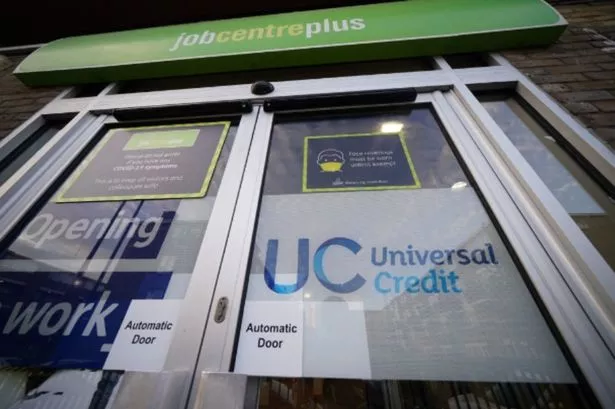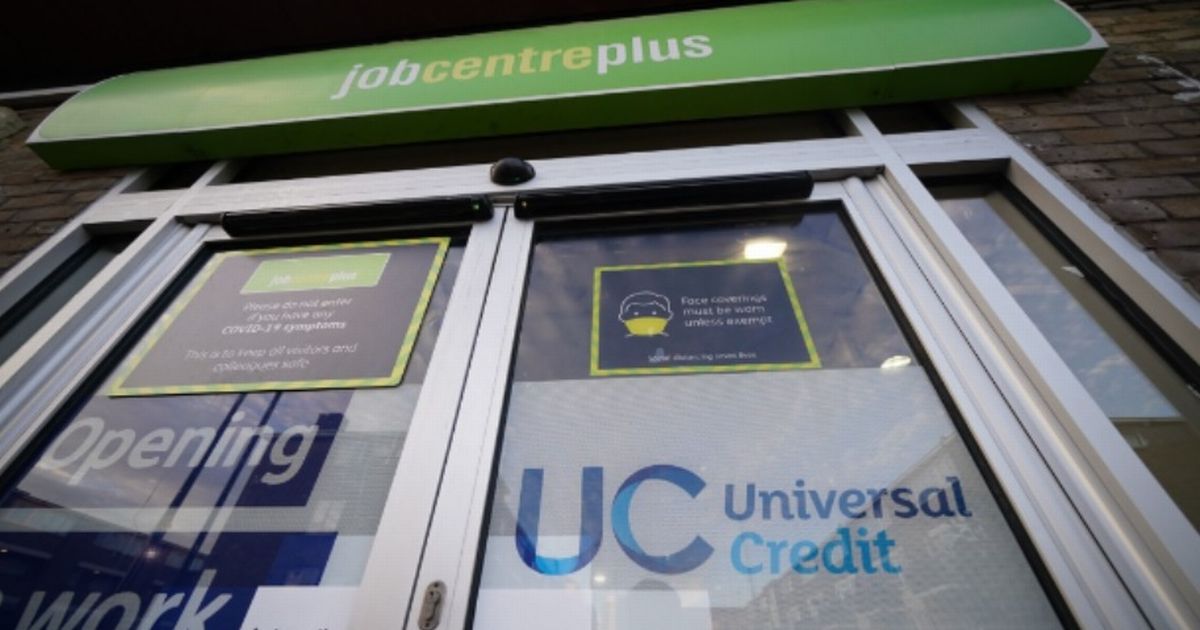The Government says the reforms are designed to “rebalance” the welfare system, making it fairer and sustainable for the future
11:23, 03 Oct 2025Updated 17:06, 04 Oct 2025
 DWP reforms of Universal Credit and PIP are coming in 2026
DWP reforms of Universal Credit and PIP are coming in 2026
Major reforms are on the way for two of the Department for Work and Pensions’ key benefits – Universal Credit and Personal Independence Payment (PIP).
From April 2026 onwards, millions of claimants will be affected by new DWP rules that reshape how much financial support they receive, who qualifies for additional help, and what happens to those with long-term health conditions.
The Government says the reforms are designed to “rebalance” the welfare system, making it fairer and sustainable for the future. Critics, however, argue that many of the changes will reduce support for people most in need, particularly those with disabilities or serious health conditions.
READ MORE:
Here is the full breakdown of what’s coming.
1. Universal Credit standard allowance to increase above inflation
The Universal Credit standard allowance – the basic amount everyone receives before additional elements are added for children, sickness, or caring responsibilities – will rise faster than inflation over the four years between 2026/2027 and 2029/2030.
- From April 2026, the allowance will increase from £91 to £98 per week.
- In total, the above-inflation rises will be worth an additional £725 by 2029/2030 for a single adult aged 25 or over, around £250 higher than inflation-only increases.
The planned increases are:
- 2.3% in 2026/27
- 3.1% in 2027/28
- 4% in 2028/29
- 4% in 2029/30
What this means for claimants: While some families will welcome the higher standard allowance, the gains will be partly offset by changes to other parts of Universal Credit (see below).
2. Universal Credit sickness payment halved and frozen for new claimants
The Limited Capability for Work and Work-Related Activity (LCWRA) element provides an extra monthly payment for claimants whose health or disability limits their ability to work.
- From April 2026, new claimants awarded LCWRA will only receive £217.26 per month.
- This is around half of the current rate of £423.27 per month.
- Unlike most Universal Credit elements, the reduced LCWRA rate will be frozen at that level, with no annual increases.
- By 2030, the LCWRA element will be scrapped entirely and replaced with a new health element linked to PIP (see below).
The Government argues this change will prevent situations in which people are incentivised to double their Universal Credit standard allowance by declaring themselves unfit for work so they can add the LCWRA payment to their claim.
What this means for claimants: People newly asking for support if they cannot work because of health conditions face a significant cut compared to current awards, potentially losing over £2,400 per year.
3. Existing LCWRA claimants protected
Those already in receipt of the full LCWRA payment before April 2026 will continue to receive the higher £423.27 per month, uprated annually in line with inflation.
This protection was not part of the original plan. Early proposals suggested freezing the LCWRA rate at its current level. Following pressure from campaigners and MPs, the Government agreed to protect existing claimants from the reforms.
What this means for claimants: Long-term sick and disabled people already on LCWRA will keep their current level of support, though new claimants after April 2026 will face much lower payments.
4. New Severe Conditions Category introduced
A new Severe Conditions group will be created within Universal Credit for claimants with the most serious and lifelong disabilities or health conditions that mean they will never be able to work.
- People who meet the criteria will continue to receive the full LCWRA payment, protected and uprated each year.
- They will also be exempt from reassessments to check if they still qualify
- Around 200,000 claimants are expected to meet the criteria.
Terminally ill claimants who qualify under the Special Rules for End of Life (SREL) will also be entitled to the higher LCWRA payment.
However, critics argue that the criteria are too narrow. Lord Palmer, a Liberal Democrat peer, warned: “Only one in nine claimants who would currently receive the full LCWRA support will qualify under the Severe Conditions criteria; that is, just 200,000 people. The consequences are clear: spiralling hunger, mental health crises and suicide. These changes will destroy lives.”
What this means for claimants: While some of the most vulnerable will be protected, the vast majority of claimants with health conditions will only receive the halved and frozen LCWRA rate.
5. LCWRA replaced by new Health Element linked to PIP after 2030
After April 2030, the LCWRA element will be scrapped altogether. Instead, a new health element will be introduced.
- This will be automatically awarded to anyone who already qualifies for the daily living element of PIP.
- This means claimants will no longer have to undergo a separate Work Capability Assessment to access additional health-related support.
- But it means those who do not get a daily living award of PIP will not be eligible for Universal Credit health support
Supporters argue this will streamline the system with just one assessment process to access health-related financial support, but others warn it risks excluding people who might not meet PIP’s criteria but still struggle to work due to health issues.
What this means for claimants: People with health conditions and disabilities will only have to go through one assessment – the one needed for PIP – rather than have a second one for Universal Credit support as well. But those who are not receiving PIP (or do not qualify for it) will not be eligible for further health support from Universal Credit, which could impact on household finances if they do not have any other sources of income.
6. PIP review and reforms from Autumn 2026
Alongside Universal Credit reforms coming into effect, PIP itself will be under major review.
- The Timms Review, led by DWP Minister Sir Stephen Timms, is expected to conclude and put forward its recommendations by Autumn 2026.
- The review is being co-produced with disabled people, advocacy organisations, clinicians, MPs, and policy experts.
- It will examine both the daily living and mobility elements of PIP and linked entitlements such as Motability vehicles.
- Proposals to reduce eligibility for PIP have been removed from legislation while the review is carried out. The shelved changes would have meant that claimants needed to score a minimum of four points in at least one daily living activity to be eligible for the daily living component of PIP.
Sir Stephen has promised a thorough and inclusive process, stating: “We will co-produce our review of the PIP assessment with disabled people and representatives of disability organisations. The review will cover the assessment for the mobility component, which leads on to the Motability scheme, and other entitlements to which PIP is a gateway.”
The review is expected to report to the Secretary of State for Work and Pensions, and may lead to:
- New primary or secondary legislation
- Reforms to assessment procedures
- Potential non-legislative changes to administration and guidance
What this means for claimants: The PIP review could reshape one of the UK’s most significant disability benefits, though details of any reforms will not be clear until late 2026 or beyond.
Key takeaways
- Universal Credit standard allowance is rising above inflation from 2026.
- LCWRA support will be halved and frozen for new claimants, but protected for existing ones.
- A new Severe Conditions group will safeguard around 200,000 people with lifelong disabilities.
- From 2030, a new health element linked to PIP will replace LCWRA.
- A major PIP review will conclude “by autumn 2026” and set the stage for further reforms.
Frequently asked questions
Will current Universal Credit claimants lose their LCWRA support in 2026? No. If you already receive LCWRA before April 2026, you will continue to receive it at the current full rate, uprated each year.
What happens if I am placed in LCWRA after April 2026? You will only receive the halved rate of £217.26 per month, and this will be frozen without any annual increases.
What is the Severe Conditions group? A new category within Universal Credit for people with the most serious and lifelong health conditions. Around 200,000 people are expected to qualify, and they will receive the higher LCWRA payment and be exempt from reassessment.
When will the PIP reforms be decided? The Timms Review will report in late 2026. Changes could then be legislated in 2027 or beyond.
Conclusion: The DWP’s 2026 reforms mark the most significant reshaping of Universal Credit and PIP since they were introduced. While higher standard allowances may help many households, the reduction of LCWRA support for new claimants represents a sharp cut for people with health conditions. With a major PIP review also on the horizon, the coming years will be decisive in determining the future of support for disabled people in the UK.
Get breaking news on BirminghamLive WhatsApp. Join our dedicated community for the latest updates sent straight to your phone as they happen.
You can find out more about cost-of-living issues in our Money Saving Newsletter, which is sent out daily via email with all the updates you need to know on pensions, PIP, Universal Credit, benefits, finances, bills, and shopping discounts. Get the top stories in your inbox to browse through at a time that suits you.
